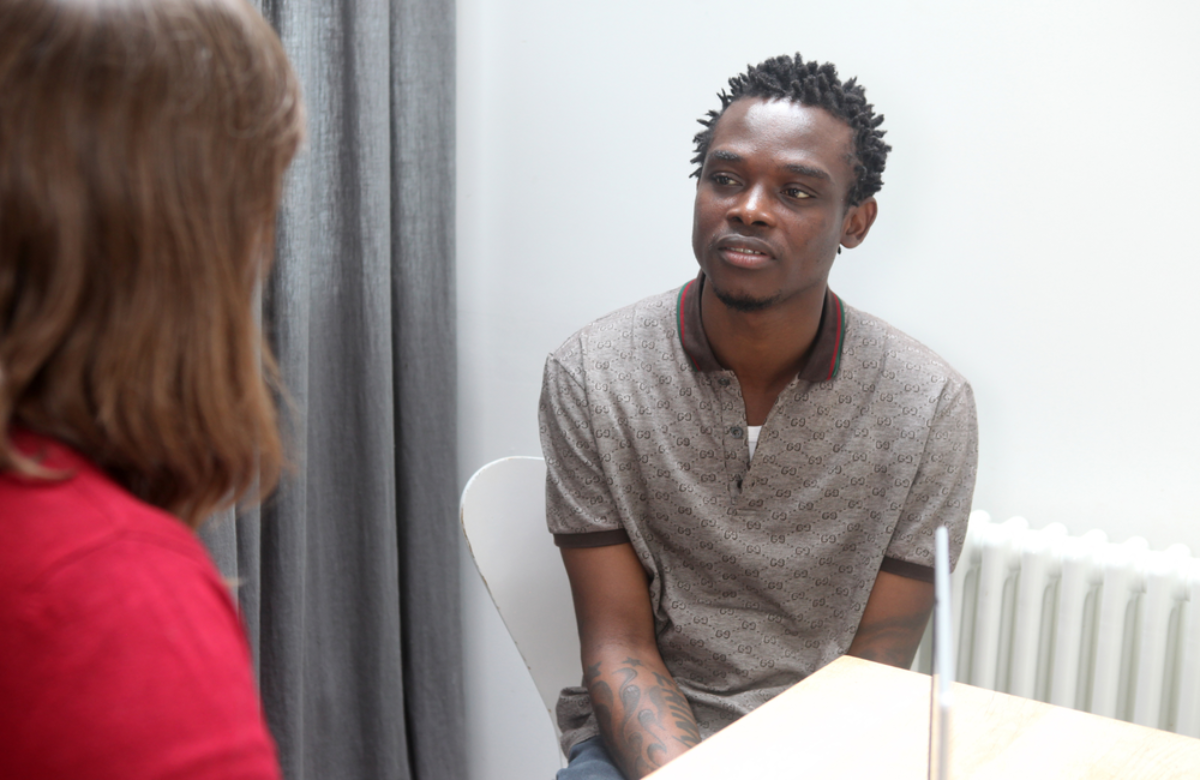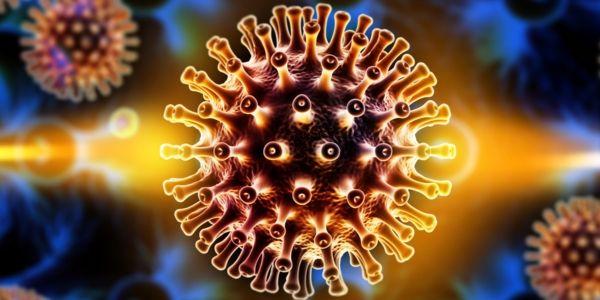News from aidsmap

Oral PrEP can work just as well for women as men, modelling studies conclude
Oral PrEP for people whose exposure to HIV is through vaginal sex is just as effective as it is for exposure through anal sex, two re-analyses of the data from PrEP efficacy trials conclude. Lower efficacy among cisgender women, and zero efficacy in a couple of large trials, is almost entirely due to differences in adherence – not to any biological differences in the way PrEP is taken up by women’s bodies, or by vaginal rather than rectal tissues. In particular, the studies suggest that four or more doses of PrEP per week confer 95-100% efficacy, as they do in gay men.
“Men are more selfish and proud”: healthcare workers' negative biases in sub-Saharan Africa
Healthcare workers’ negative attitudes towards men prevent them from acknowledging structural barriers and may create hostile environments for men wanting to access health care. Researchers found that healthcare workers in Malawi and Mozambique framed men as problematic and “selfish”, which places an unfair responsibility on individual men while minimising barriers and challenges they face.
Zimbabwe shows how to make new HIV prevention products available quickly
Zimbabwe has been able to approve two new HIV prevention products within six months and did so before any other African nation. How did it achieve this and what are the lessons for other countries that have urgent needs for new HIV prevention options?
Giving a figure for HIV viral load below 200 is a “harmful medical practice”
As HIV RNA tests become ever more capable of detecting minute quantities of the virus, healthcare providers and laboratories should be more mindful of how viral load results can be misinterpreted in the era of ‘Undetectable equals Untransmittable’ (U=U). Although HIV is not passed on through sex with a viral load below 200 copies/ml, people living with HIV may receive lab reports showing that their result is, for example, “HIV-1 RNA detected, 35 copies/ml” and be confused about whether U=U applies to them.

Compassionate holistic care retains Latina trans women in HIV prevention services
A qualitative study has shown that having peer workers and adequate training of staff at all levels are key to ensuring trans-affirming care and retention of trans women in HIV prevention services. Latina transgender women are best served and engaged when they are given holistic care and services beyond HIV prevention, say the researchers.
New HIV drugs should be classed as inferior if they carry a higher risk of resistance
New antiretroviral regimens should be considered inferior to older ones unless trials can demonstrate that their failure doesn’t lead to more drug resistance than standard treatment, Italian researchers argue in The Lancet HIV.
Free antiretroviral therapy for non-citizens in Botswana: a further step towards the elimination of HIV
Following the expansion of antiretroviral therapy to migrants and non-citizens in Botswana, gaps have narrowed in the uptake of antenatal care and antiretroviral therapy during pregnancy between citizens and non-citizens living with HIV. Disparities in adverse birth outcomes were no longer observed after the change in policy.
Adolescents with HIV in Zimbabwe are not being told why an undetectable viral load matters
Almost all adolescents and young people having viral load monitoring in Zimbabwe do not understand why it is done, a recently published study has found. Most believe it's a procedure that enables clinicians to rectify poor adherence behaviour and they do not link it to improved health or quality of life.

How do participants feel about analytical treatment interruptions in HIV cure-directed trials?
Experiences of participants in a US HIV cure-directed study with an extended analytical treatment interruption are reported in HIV Research & Clinical Practice. The researchers recommend that those designing HIV cure-directed trials should manage participants’ expectations and focus on the contribution they are making.
Tuberculosis still much more common in people with HIV in high-income settings
Tuberculosis is still one of the world’s deadliest infectious diseases, with 10.6 million people developing active (symptomatic) TB infection in 2022 and 1.3 million dying from it. That’s second only to COVID, which killed 6.95 million people last year, and far more than the 630,000 who died due to HIV.
Heavy drinking, metabolic disorders and hepatotoxic antiretrovirals are risk factors for chronic liver disease in UK cohort
More attention should be paid to modifiable risk factors for chronic liver disease in people with HIV, such as alcohol, metabolic disorders and being overweight, HIV and hepatology specialists in Brighton, England report in the Journal of Acquired Immune Deficiency Syndromes.
95% decline in new HIV infections in Amsterdam
New cases of HIV infection are close to being eliminated in Amsterdam, having fallen from 201 in 2010 to nine infections in 2022. Currently, 98% of all people living with HIV have been diagnosed, 95% of those diagnosed are on antiretroviral treatment and 95% of those on treatment have achieved viral suppression.
Dolutegravir resistance is rare, but some risk factors can up the odds
No drug is immune to resistance, but dolutegravir, one of the most widely used HIV drugs, has so far shown an excellent barrier to resistance. Nevertheless, a large study that analysed data from several countries found that resistance was more common in people who took dolutegravir monotherapy or dual therapy with lamivudine, or who had resistance to NRTIs (the backbone drugs usually combined with dolutegravir).
Why is HIV hard to cure?

We know that HIV infection can be cured but, so far, cures have only been confirmed in a handful of cases.
Find out why a cure is so difficult and the two main ways HIV cures have been achieved in our new page.
Conference news from ICASA 2023

'Swimming amongst crocodiles': How HIV services are provided in conflict zones across Africa
In Cape Town, South Africa, where gang violence is a serious problem with as many as 90 to 130 gangs, Jhpiego has been working with gang leaders who control different areas of the Cape Metro to provide voluntary medical male circumcision to prevent HIV. Researchers from Jhpiego presented results from the project at the 22nd International Conference on AIDS and STIs in Africa (ICASA 2023), held in December in Harare, Zimbabwe.
HIV self-testing in Africa: is the private sector key to reducing undiagnosed HIV?
“With the right policies, regulations, and technical guidance,” the volume of HIV self-testing kits sold in Uganda was multiplied by 20, Fosca Tumushabe from Population Services International told ICASA 2023. In addition, the volume of non-approved kits sold more than halved, while close to two million people were reached with HIV self-testing information through digital channels.
Locked up and forgotten: African prisoners have been left behind in the fight against HIV
Despite 15.5% of prisoners in sub-Saharan Africa having HIV, incarcerated people have been largely left behind in the fight against HIV, the conference heard. Doreen Namyalo, the sub-Saharan Africa Director at Penal Reform International, told the conference that the HIV burden in Zambian prisons was 27%, 37% in Malawi, 17% in Lesotho, 15% in Uganda and 8% in Kenyan prisons.
Africa's health systems should urgently integrate HIV and co-morbidity services for older people with HIV
Non-communicable diseases are now a significant cause of mortality for people with HIV in Zimbabwe, but people with HIV are less likely to have their condition diagnosed than people in the general population and many health facilities lack basic equipment needed for screening, the conference heard.
Sexual health & HIV policy EUROBulletin

The December 2023 Sexual Health & HIV Policy EUROBulletin is available to read online.
In this edition's feature, we spoke to Dr Godelieve de Bree, project leader of the HIV Transmission Elimination AMsterdam (H-TEAM) Initiative. The work of H-TEAM has contributed to an astonishing 95% decline in HIV in Amsterdam.
Other items to look out for include: new HIV reports published for World AIDS Day from UNAIDS, and the World Health Organization and European Centre for Disease Prevention and Control; an overview of abortion law and policy changes over the last year; and a European Parliament debate on access to sexual and reproductive health and rights for Ukrainian refugees.
Editors' picks from other sources
HIV drugs might help prevent multiple sclerosis, large new study suggests | The Conversation
People who take antiretroviral drugs have a much lower risk of getting multiple sclerosis – especially women.
Court challenge to Uganda’s Anti-Homosexuality Act begins as researchers reject directive to report ‘offenders’ | Health Policy Watch
As the court challenge to Uganda’s Anti-Homosexuality Act began, Uganda’s National Council for Science and Technology was condemned for directing researchers to report anyone who violated, or was suspected to be violating, the Act in their research programmes to the police.
Russia faces shortage of HIV/AIDS drugs | Deutsche Welle
More than one million people in Russia are HIV positive, but many don't receive the necessary treatment. As infection rates soar, supplies of HIV/AIDS medications are dwindling. Why is that?
How to get meds to Africa faster – and safer | Bhekisisa
South Africa’s medicines regulator is helping to process pharmaceutical companies’ applications for medicines to be approved by the African Medicines Agency.
‘Last roll of the dice’ for a near-term HIV vaccine fails | STAT
A study billed as the last chance to develop an HIV vaccine this decade has been shut down, investigators announced at ICASA 2023 in Harare, Zimbabwe, in December. The trial, known as PrEPVacc, was testing two different vaccine regimens on about 1500 volunteers in east and southern Africa.
Bone loss, osteoporosis, and HIV

Rates of bone loss (osteopenia and osteoporosis) are higher in people living with HIV than in the general population. There is also evidence that bone problems might happen at a younger age.
You can reduce your risk of osteoporosis by making changes to your lifestyle, including getting plenty of exercise, and making sure you get enough calcium and vitamin D.
Find out more in our updated page on aidsmap.
